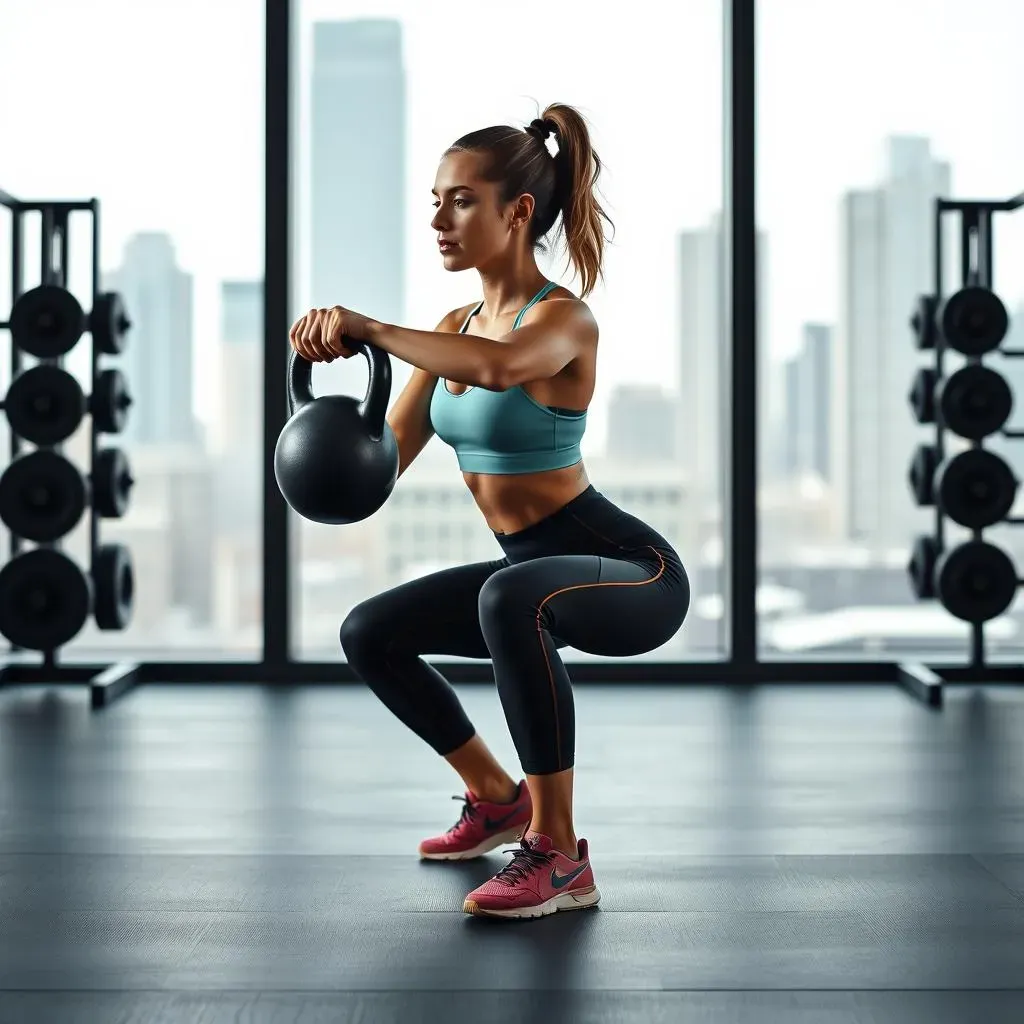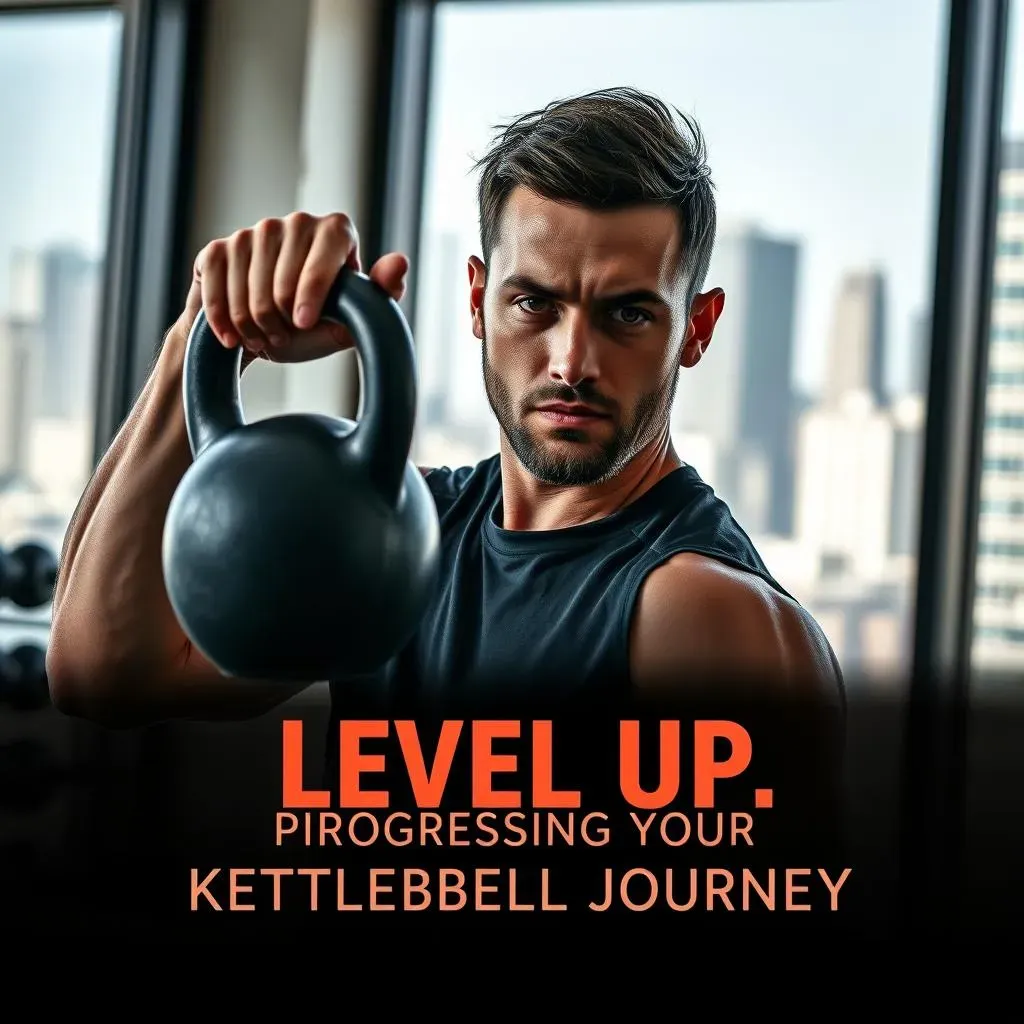Table of Contents
Ready to sculpt a stronger, more toned you? This beginner kettlebell full body workout is your ticket to a fantastic fitness journey. Forget boring gym routines – kettlebells make exercise fun and effective. In this article, we’ll guide you through the essentials, from mastering the proper kettlebell grip to executing six fundamental exercises that will work every major muscle group. We'll break down the basics, ensuring you feel confident and prepared, even if you've never touched a kettlebell before. Don't worry about complicated moves or expensive equipment; we'll focus on simple, yet highly effective techniques. We'll also show you how to progress your workouts safely and effectively, ensuring you see results and avoid injuries. Get ready to unleash your inner strength and discover the power of kettlebell training. Let's get started on your path to a fitter, healthier you with this beginner kettlebell full body workout!
Getting Started: Kettlebell Basics and Safety

Getting Started: Kettlebell Basics and Safety
Choosing Your Kettlebell
First things first: you need a kettlebell! They come in various weights, so choosing the right one is key. Start with a lighter weight, maybe 8kg or 12kg, to get a feel for the movement. Don't worry about looking strong; focus on perfect form. You can always increase the weight later. Think of it like learning to ride a bike – you wouldn't start with a mountain bike, would you? A good beginner program will guide you through this.
Also, kettlebells are made from different materials. Cast iron is the most common, and they're super durable. But some people prefer vinyl-coated kettlebells, which are gentler on floors. Ultimately, the best kettlebell is the one you enjoy using. Check out this guide on are kettlebells the best workout to make sure you're on the right track.
Kettlebell Type | Pros | Cons |
|---|---|---|
Cast Iron | Durable, affordable | Can be heavy, may damage floors |
Vinyl-Coated | Floor-friendly, comfortable grip | Less durable, can be more expensive |
Mastering the Grip
Now, let's talk grip. The most common grip is the "rack position," where you hold the kettlebell close to your body, like you're holding a big, heavy mug. Keep your elbows tucked in and your back straight. Practice this position until it feels natural. This is crucial for many exercises, including the 2-handed kettlebell exercises we'll cover later.
Remember, safety first! Always maintain a stable stance, engage your core muscles (think about tightening your stomach), and avoid jerky movements. If you're unsure about anything, watch a few videos online to see how professionals do it. A solid foundation is essential before you move on to more advanced moves. If you're a woman, we have a special kettlebell workout for women that you might find useful!
- Start with lighter weights.
- Maintain a stable stance.
- Engage your core.
- Avoid jerky movements.
Your First Kettlebell Workout: Six Essential Exercises

Your First Kettlebell Workout: Six Essential Exercises
Goblet Squats: Leg Day, Kettlebell Style
Let's start with a classic: the goblet squat. Hold your kettlebell close to your chest, like a goblet (hence the name!). Now, squat down as if you're sitting in a chair, keeping your back straight and your chest up. Push through your heels to stand back up. Aim for 10-12 reps. It’s all about controlled movements; don't rush it! Remember those core muscles? Engage them throughout the exercise. This is a great full-body exercise, and it’s a foundational movement for many other kettlebell exercises.
Want to make it harder? Try doing these squats with one leg at a time! You can also increase the weight of your kettlebell as you get stronger. But again, focus on proper form before increasing the weight. Check out our guide on beginner kettlebell abs workout for extra core strengthening exercises you can add to your routine.
- Hold kettlebell close to chest.
- Squat down, keeping back straight.
- Push through heels to stand.
- Aim for 10-12 reps.
Kettlebell Swings: The Full-Body Powerhouse
Next up, the kettlebell swing! This isn't just about your arms; it's a fantastic full-body exercise that works your posterior chain (think glutes and hamstrings). Start with your feet shoulder-width apart, holding the kettlebell between your legs. Hinge at your hips, keeping your back straight, and swing the kettlebell up to chest height, using your legs and hips to generate power. Control the swing back down. Aim for 15-20 reps. Remember to keep those core muscles engaged and your back straight! You'll feel the burn in your glutes and hamstrings—in a good way!
Don't be afraid to start with a lighter kettlebell; mastering the technique is far more important than lifting heavy weights. This exercise is like a dynamic warm-up and a killer workout all in one. For more great exercises, check out our list of 5 best kettlebell exercises to build strength and endurance.
Exercise | Muscle Groups Worked | Reps |
|---|---|---|
Goblet Squats | Quads, glutes, hamstrings, core | 10-12 |
Kettlebell Swings | Glutes, hamstrings, core, shoulders | 15-20 |
Level Up: Progressing Your Kettlebell Journey

Level Up: Progressing Your Kettlebell Journey
Increasing the Weight
Once you feel comfortable with the basic movements and can perform each exercise with good form for the recommended number of repetitions, it’s time to increase the challenge. Gradually increase the weight of your kettlebell. Don't jump to a much heavier weight; instead, add small increments (1-2kg) to avoid injury and maintain proper form. Think of it as building a strong foundation—you wouldn't build a skyscraper on shaky ground! Remember, quality over quantity. Focus on maintaining perfect form, even with the increased weight. A 4-week kettlebell program can be a great way to structure your progression.
Remember that consistency is key. Aim for at least two or three workouts per week, allowing for rest days to let your muscles recover. Your body needs time to adapt and rebuild stronger. Overtraining can lead to injuries and burnout, so listen to your body and don't push yourself too hard, especially when starting. A good 30-minute kettlebell workout is a great starting point for building a consistent routine.
- Increase weight gradually (1-2kg).
- Maintain perfect form.
- Workout 2-3 times per week.
- Allow for rest days.
Adding New Exercises
After you've mastered the basics and feel confident with your chosen weight, it’s time to expand your repertoire. Introduce new exercises gradually to continue challenging your muscles and preventing plateaus. There are tons of kettlebell exercises out there, so do some research and find some that appeal to you. Start with variations of exercises you already know, such as single-leg goblet squats or Romanian deadlifts (RDLs). Remember to focus on proper form for each new exercise before increasing the weight or reps.
Consider adding exercises that target different muscle groups to create a more balanced workout. For example, if you've been focusing on lower body exercises, incorporate some upper body exercises like kettlebell rows or presses. This will help you build overall strength and prevent muscle imbalances. For a broader range of exercises, you can consult our ultimate kettlebell exercises for beginners PDF.
Exercise | Primary Muscles Worked | Difficulty |
|---|---|---|
Single-Leg Goblet Squat | Quads, glutes, hamstrings, core | Medium |
Kettlebell Romanian Deadlift (RDL) | Hamstrings, glutes, lower back | Medium |
Kettlebell Rows | Back, biceps, core | Medium |
Kettlebell Press | Shoulders, triceps | Medium |
Tracking Your Progress and Adjusting
To ensure you’re making progress, track your workouts. Note down the weight you use, the number of reps and sets you complete, and how you feel after each workout. This will help you monitor your strength gains and identify areas where you need to focus. If you notice you’re struggling to maintain good form or are plateauing, don’t hesitate to adjust your routine. You might need to reduce the weight, increase your rest periods, or change the exercises. Remember, progress isn’t always linear. There will be good days and bad days, but consistency is key.
Don’t be afraid to experiment with different workout routines to find what works best for you. There are countless kettlebell workout variations available online and in books. Consider trying a 20-minute kettlebell workout a few times a week for a shorter, effective routine. Remember to listen to your body and adjust your workout accordingly. Consistency and proper form are more important than pushing yourself too hard too soon. A well-structured plan, like the one found in our kettlebell beginner program, will help you stay on track.
“The difference between ordinary and extraordinary is that little extra.” – Jimmy Johnson